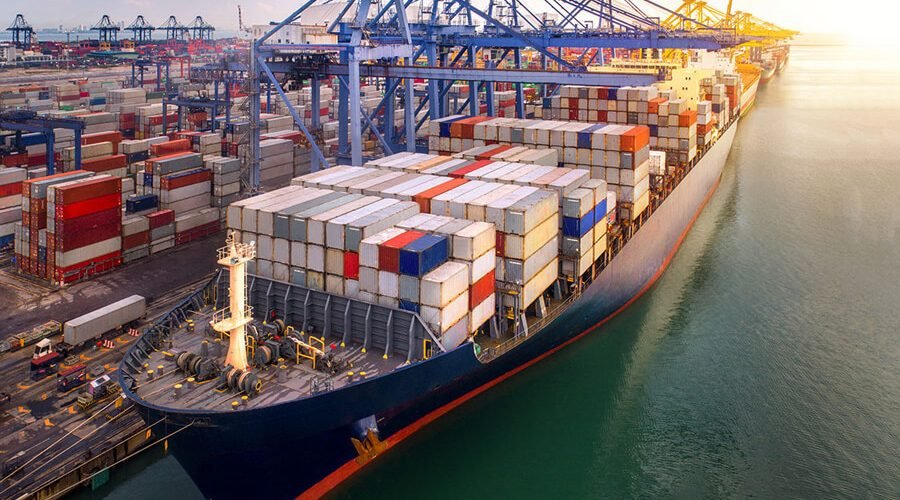Drayage is a specialized solution within the logistics and transportation industry worth billions of dollars. Thanks to the high demand for commodities and the increase in foreign cargo containers arriving at United States ports, the market for freight transportation has expanded. However, there are still shipping challenges, including the limited availability of truckloads, inadequate operators to meet demand, and persistent bottlenecks at rail yards or ports. Fortunately, a knowledgeable Drayage service at ArdentX can help shippers get the most out of drayage services. They can help coordinate your intermodal drayage needs. The following article looks at drayage solutions, how consumers and shippers use them, and what you can expect from them.
Table of Contents
What Exactly Is Drayage?
Drage involves the movement of products over short distances. It’s often part of a larger overall move, such as moving cargo from container ships to storage facilities. Unlike usual freight transportation that moves large containers from ships to storage facilities, drayage involves moving cargo from a port to a truck or from a port to a train. It’s usually a modest distance achievable within one to two hours and virtually always within a similar geographic region.
Further, drayage transfers are usually outbound and return shipments, as it is important to get the container back to port as soon as possible. In essence, shipping professionals arrange for a vehicle to pick up containers at the port and transport them to a nearby inland location. Once the container is unloaded, the truck usually transports the empty container back to the port for loading onto a steamer.
In some instances, the now empty shipping containers are delivered straight to the exporters (street run) instead of returning to the marine terminal. It allows trucks to make additional turning maneuvers while helping to reduce congestion in the port.
The Importance Of Drayage
Drayage is only a small part of the shipping process, but it is an important element of the larger logistical jigsaw. Efficient supply chains seek to maintain a continuous flow of goods to meet the growing global trade demands. The goal of dray services is to relieve port traffic and constraints. If the initial mile of product distribution goes well, the rest of the journey is more likely to be a success.
In addition, drayage services help customers reduce the costs associated with using containers to transport goods. Consumers prefer containers for transporting goods from source to delivery, as containers are ideal for transporting heavy loads such as steel, vehicles, composites, and metals over long distances. Shipping companies typically have large containers and charge consumers a fee. These shipping companies need the containers back to repack and ship for their next consignments. Customers who fail to return their container within the allotted duration will incur additional fees.
Usually, shipping companies give customers three to five business days to have their container at the port at no additional charge. After that, they have two to three business days at the railway ramps before additional charges apply. Consumers can engage dray brokers to save time and reduce shipping expenses. It is critical to establish relationships with shippers who specialize in drayage hauls. Ensure your potential shipper is reliable, vetted, and licensed to move your cargo from a ship deck or rail car to your next transport vessel.
What Distinguishes Dray Brokers From Other Brokers?
Dray brokers work on a volume basis and perform more small moves within shorter periods. These professional agencies and dray brokers work with an exclusive group of carriers with the necessary staff and equipment for short hauls.
Necessary Details For Drayage Services
The freight volume and the dimensions of the transport container are necessary for contracting a drayage service. It’s also important to clarify whether the shipment is refrigerated, whether the contents are hazardous, and when it’s expected to arrive.
The Duration Necessary To Arrange Drayage Solutions
Ideally, customers should provide four to five days’ notice for the transportation of their goods. Engaging a carrier once the shipment arrives at the terminal can delay your shipment. It’s important to arrange drayage with your broker in advance for competitive pricing. Early preparation also reduces the time your container spends at the rail yard or port,
Shipping is complex at all levels of transportation, including the drayage phase. While drayage services present their share of obstacles, you must recognize the outweighing advantages. Experts predict that the drayage industry will grow by around three billion US dollars by 2025, thanks to the convenience it offers. You can effectively organize cargo transportation within short distances by engaging experienced and reliable drayage professionals.





